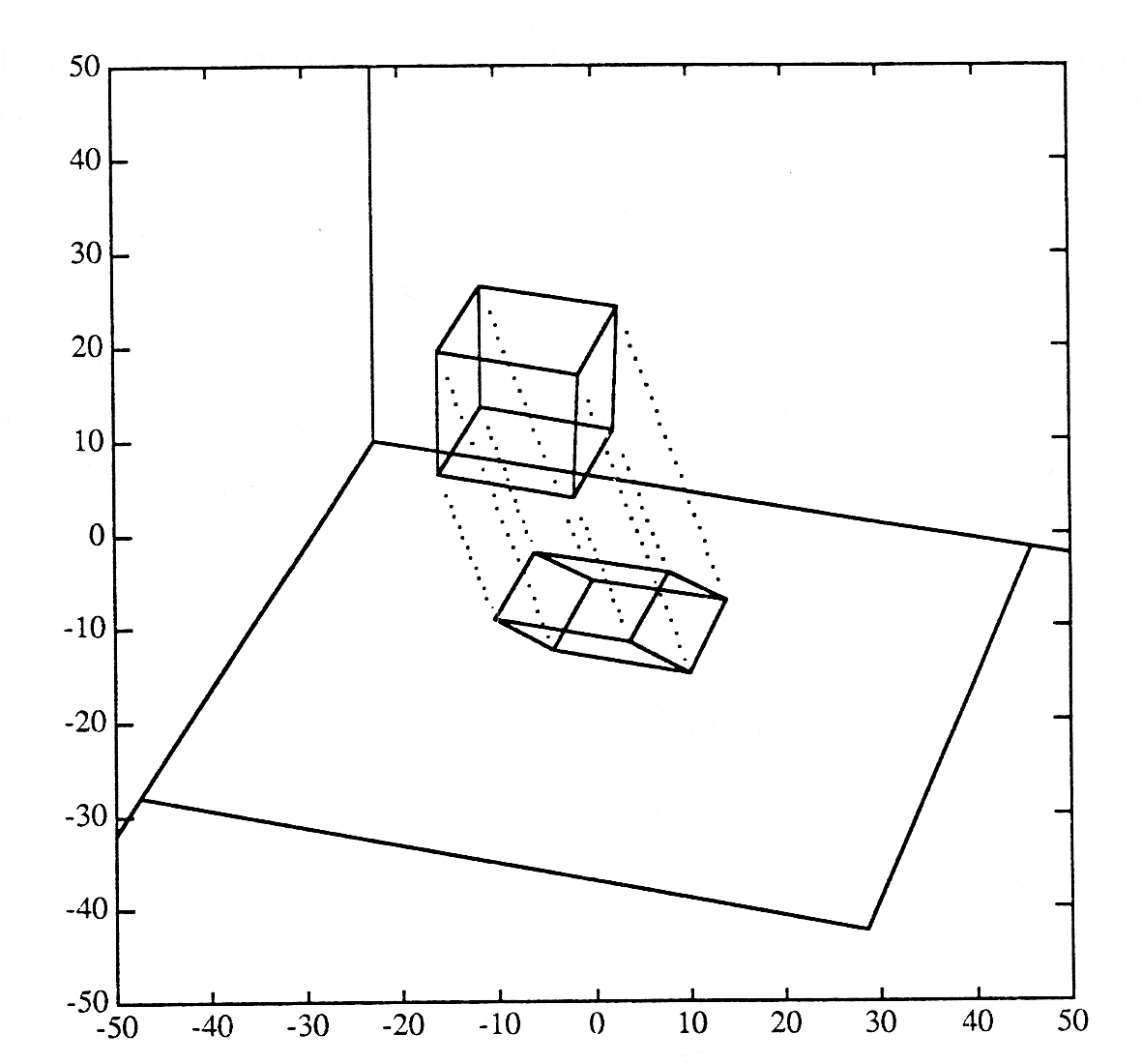| << Chapter < Page | Chapter >> Page > |
Computer screens and printers are two-dimensional display devices. We must somehow convert three-dimensional images to two dimensions in orderto display them. This task is done by another kind of matrix operator called a projection .
To build a projection, we first choose a projection plane in the three- dimensional space of the object we wish to view. All points of the object arethen projected onto the plane. There are many different kinds of projections, corresponding to various geometric rules for mapping points in space onto aplane. We begin with the parallel projection illustrated in Figure 1 , wherein the dotted lines between the points and their projections in the plane are allparallel to one another. These dotted lines are called projectors .
Range. The projection plane is called the range of the projection. We will assume for now that the projection plane passes through the origin. If itdoes not, we may later compose the necessary translations with our projection. Three points, not all in a line, are required to determine a plane. We will takethe origin as one of the points and suppose that the other two points are the vectors and . From these vectors, we form the matrix
which determines the range of the projection.

Null-Space. To complete the specification of the parallel projection, we must specify the direction of the projectors. The line through the origin inthis direction is called the null-space of the projection. Note that any line in the three-dimensional object that is parallel to the null-space will disappearto a point when projected. The null-space may be specified by a vector pointing in the direction of the projectors.
Orthogonal Projection. If the null-space is perpendicular to the range, we say that the projection is an orthogonal projection . The matrix operator for orthogonal projection is a function of the range. If we assumethat is specified in three-dimensional coordinates (not homogeneous!), we have the following definition for the orthogonal projection onto the range of :
In homogeneous coordinates, we embed this projection matrix in the general transformation:
Suppose we choose the plane as our projection plane. Vectors and can be any two points in the plane (besides the origin), so let's take
Then the range matrix is
The orthogonal projection looking down on the plane from the z-axis is
In homogeneous coordinates,
In the chapter on linear algebra you learned that the projection of onto is given by
This is an orthogonal projection of w onto a line, but it is closely related to the projection into the plane just described. To see the similarity, let's workon the expression for a little:

Notification Switch
Would you like to follow the 'A first course in electrical and computer engineering' conversation and receive update notifications?